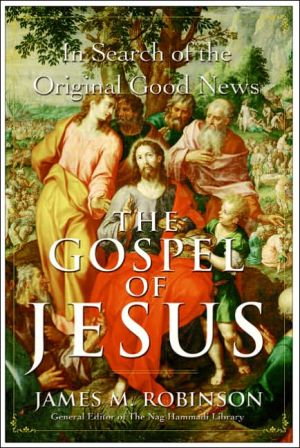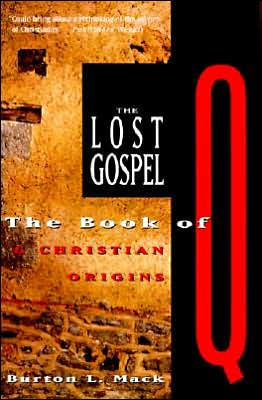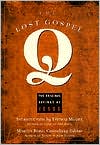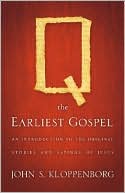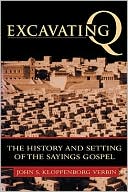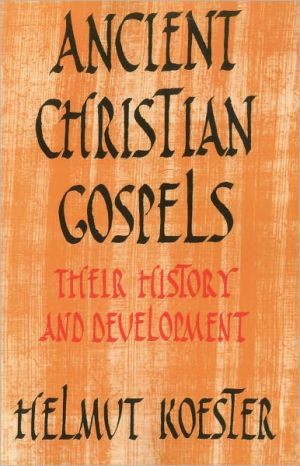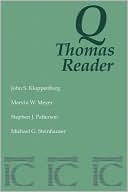Gospel of Jesus: In Search of the Original Good News
We all know the Gospels of Matthew, Mark, Luke, and John, but what was the gospel of Jesus? That is, what was the original "good news" the first disciples heard from Jesus? What did Jesus really say that started the dramatic movement in Galilee that grew to become the largest religion in the world?\ Jesus's original gospel has been lost from sight, hidden behind the version preferred by the church. We have put him on a pedestal, rather than walked in his footsteps. In The Gospel of Jesus,...
Search in google:
We all know the Gospels of Matthew, Mark, Luke, and John, but what was the gospel of Jesus? That is, what was the original "good news" the first disciples heard from Jesus? What did Jesus really say that started the dramatic movement in Galilee that grew to become the largest religion in the world?Jesus's original gospel has been lost from sight, hidden behind the version preferred by the church. We have put him on a pedestal, rather than walked in his footsteps. In The Gospel of Jesus, James M. Robinson, the preeminent expert on the earliest sources of information about Jesus, provides the primary texts in all their unvarnished honesty to get to the true historical message of Jesus — what Robinson calls "a brittle, upsetting, comforting, challenging gospel." The Gospel of Jesusdraws on a combination of the most ancient and authentic texts to reveal what Jesus really said and to illuminate what he may still have to say to us today.Robinson addresses such provocative questions as: What can we know about Jesus's childhood and youth? What was his family like? What sort of education did he receive? How observant a Jew was he? What do we know about his sex life? What do we know about his relation to Mary Magdalene? What was John the Baptist's impact on him? What message did Jesus really preach? What do we know about his crucifixion? Why did his followers believe so fervently in his resurrection? Drawing on the earliest Gospel, Mark, plus the source for Matthew and Luke, known as "Q," as well as from Jewish sources such as the Dead Sea Scrolls and the ancient extra-biblical Gnostic texts discovered at Nag Hammadi, Robinson not only reconstructs the good news Jesus preached and practiced two thousand years ago, but shows how relevant his message still is — and how we can apply it to our lives today. The Gospel of Jesus offers one of the most authentic and stirring accounts ever written of the message preached by the figure whose followers today number more than two billion.
The Gospel of Jesus\ In Search of the Original Good News \ \ By James M. Robinson \ HarperCollins Publishers, Inc.\ Copyright © 2005 James M. Robinson\ All right reserved.\ ISBN: 0060762179 \ \ \ Chapter One\ \ The Lost Gospel of Jesus\ \ The rash title of this book, The Gospel of Jesus, does not have in view the gospel about Jesus that Paul preached, which, following him, the Christian church down through the ages has believed as the one and only gospel (see Chapter 10). Rather, the title refers to the gospel that was Jesus' own message in Galilee during a very brief period, probably no more than a year, before his crucifixion. These two gospels are not the same, and, what is even worse, Jesus' own gospel has been lost from sight, hidden behind the gospel of the church.\ This little book certainly does not tell everything you would like to know about Jesus. It does not even tell everything that can be known about him. It is not intended to satisfy your curiosity about odds and ends, but to focus on what Jesus was up to. So it does contain the core, what Jesus considered his own gospel.\ Whatever might be added that would distract from that focus would not be faithful to Jesus, no matter how factual it might be. You also may not find here your "favorite" material of Jesus', which may well be unconsciously preferred precisely because it has been domesticated, watered down, or even just put on Jesus' lips, rather than being what was central to him, what he himself had to say. Listening to Jesus is not easy.\ The disciples handed down sayings and stories that meant something to them, not just stray information that satisfied their curiosity. They stuck to what they considered basics.\ Our real problem with Jesus is not the vast amount of detail we will never know, for most of that we do not need to know. The problem is that we have ascribed to him a different gospel from what he himself envisaged! We have put him on a pedestal and worshiped him, rather than walking in his footsteps. Put somewhat differently: we must work our way back through the church's own familiar gospel and its domestication of the gospel of Jesus. Only then do we strike upon what he really had to say, which was a brittle, upsetting, comforting, challenging gospel -- one the present book seeks to lay bare.\ This situation calls for some explanation, before we turn to his message itself.\ The Apostles' Creed\ \ The Apostles' Creed, shared among almost all branches of Christianity, poses the problem clearly, even if unintentionally. It presents Jesus as the central figure in the Trinity in heaven, rather than as the individual he was in Galilee. Listen closely to the way the creed presents him. Before reporting that Jesus went to heaven, the creed only tells what was done for him:\ \ conceived by the Holy Ghost, born of the Virgin Mary\ \ and then what was done against him:\ \ suffered under Pontius Pilate, was crucified, dead, and buried\ \ But on his life between birth and death, Bethlehem and Golgotha, the creed is completely silent! Missing is what was said and done by Jesus, what Jesus himself actually had to say by way of gospel.\ The present book seeks to fill in the missing gospel of that Galilean Jesus. It is he, even more than Mary, and surely more than Pontius Pilate, who is the central person in the Apostles' Creed, even if, so to speak, in absentia.\ The name "Apostles' Creed" is itself a misnomer, if it is taken to mean that it was composed by the twelve apostles, indeed by any of Jesus' Galilean followers. It actually developed out of the baptismal confession of the gentile church of Rome, documented only from the second century on. How the original disciples themselves would have put it can be inferred only by going back through the Gospels to the oldest traditions they preserve -- which is precisely what I propose to do here.\ The Sayings Gospel Q\ \ The primary source for knowing Jesus is to be found in the pithy and memorable sayings he used to move his listeners to trust in God enough to go into action. They are what lived on after him, they are what his disciples continued to proclaim -- in spite of experiencing his utterly appalling execution (see Chapter 9). You might think the crucifixion would have crushed their faith in all that Jesus had said and silenced even their best intentions. But their experience of Jesus still calling on them to continue his message and lifestyle was the substance of the resurrection experience.\ It was his sayings that kept alive stories about what Jesus had done, indeed engendered more and more stories about him. These oral traditions moved from Aramaic into the more literate Greek and came to be written into Gospels, which were ultimately preserved. They were included in the New Testament, which was established in the next centuries as the "canon," that is, as the standard for all that is to be considered Christian.\ To gain admission to the canon, Gospels were attributed to apostles (Matthew and John) or to those dependent on apostles for their information (Mark and Luke). But today, these persons are not thought to have been the actual authors. None of the texts themselves give the author's name -- all four are anonymous. They were composed in the last thirty years of the first century, half a century after the facts. Their actual authors are unknown, but all four Gospels are of course cited here by their traditional names, Matthew, Mark, Luke, and John.\ In modern times, the quest of the historical Jesus has sought to bring to the surface the Galilean Jesus behind the Gospels. This quest began in the nineteenth century with the rise of modern historical scholarship. First of all, it was noted that the narratives of Matthew, Mark, and Luke contain many of the same stories in much the same sequence, whereas the Gospel of John goes its own way. Indeed, the Gospel of John is the latest of the four, from the last decade . . .\ \ Continues...\ \ \ \ Excerpted from The Gospel of Jesus by James M. Robinson Copyright © 2005 by James M. Robinson.\ Excerpted by permission.\ All rights reserved. No part of this excerpt may be reproduced or reprinted without permission in writing from the publisher.\ Excerpts are provided by Dial-A-Book Inc. solely for the personal use of visitors to this web site. \ \
Introduction: The Focus on Jesus' Gospelvii1The Lost Gospel of Jesus12The Sayings Gospel Q233Jesus Was a Galilean Jew554What We Do and Do Not Know About Jesus895Jesus Was Converted by John1116Jesus' Lifestyle Underwritten by God Himself1417Jesus' Trust in God1558Jesus' View of Himself1799The End as the Beginning20310The Gospel of Jesus and the Gospel of Paul209Epilogue: Where Do We Go from Here?219Notes229
\ From Barnes & NobleJesus' original gospel, according to scholar James M. Robinson, has been lost from sight; fragmented and hidden behind the selective version canonized by the Church. He believes, however, that crucial evidence about the Nazarene's original message has survived in numerous ancient texts: the Nag Hammadi codices, the Dead Sea Scrolls, Q, and the Bible. As the general editor of the Gnostic Nag Hammadi texts, he is especially qualified to comment on such extra-biblical sources. This reconstruction of the original message of "good news" is informed by decades of his personal research.\ \
